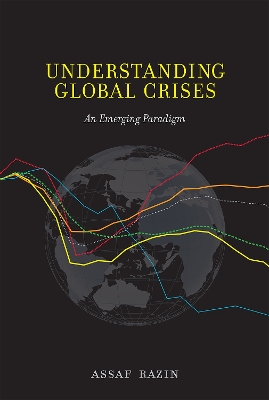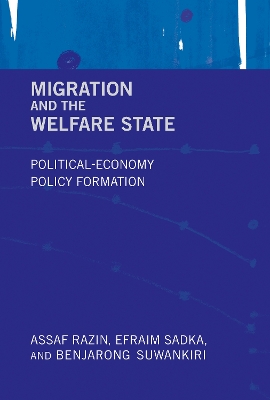The MIT Press
5 total works
From Malthus to Becker, the economic approach to population growth and its interactions with the surrounding economic environment has undergone a major transformation. Population Economics elucidates the theory behind this shift and the consequences for economic policy. Razin and Sadka systematically examine the microeconomic implications of people's decisions about how many children to have and how to provide for them on population trends and social issues of population policy. The authors analyze how these decisions affect labor supply, consumption, savings and bequests, investments in human capital, and economic growth, along with related new issues such as migration and income redistribution across generations, in an integrated microeconomic framework. Population Economics is a thoroughly modern treatment of population economics as a field in public economics. It integrates and extends Marc Nerlove's Household and Economy: Welfare Economics of Endogenous Fertility, as well as work written jointly with colleagues that has appeared in various journals and other publications.
A historical and theoretical investigation of the "common storylines" of recent financial crises.
Financial crises have some common storylines, among them bursting asset bubbles, bank failures, sharp tightening of credit, and downturn in trade. They are also different from one another. Some start with sudden reversal of international capital flows, others with domestic credit implosions. A challenge to economic research is to integrate common as well as disparate threads into a coherent analytical framework that is at the same time empirically testable. In Understanding Global Crises, Assaf Razin offers a review of an emerging paradigm that is consistent with the key features of recent global financial crises. This paradigm presents in a transparent way basic analytical elements of the theories of financial and monetary crises and how these elements fit together in macroeconomic analysis of global crises.
Razin surveys the credit implosion that led to a severe banking crisis in Japan in the 1990s, the Asian financial crisis that began in 1997, the global meltdown of 2008, and the Euro-zone crisis. He reviews the analytics of financial fragilities, credit frictions, currency crises, and balance of payments crises, and addresses international capital flows with information frictions. He then presents key developments in the New Keynesian analytical framework by examining the surge of re-modeling efforts aimed at the development of an analytical framework to underpin monetary and fiscal policy in the post-2008 economic era.
Migration and the Welfare State
by Assaf Razin, Efraim Sadka, and Benjarong Suwankiri
A unified formal framework for studying how social benefits-immigration conflicts are resolved in a range of policy regimes.
Nobel laureate economist Milton Friedman once noted that free immigration cannot coexist with a welfare state. A welfare state with open borders might turn into a haven for poor immigrants, which would place such a fiscal burden on the state that native-born voters would support less-generous benefits or restricted immigration, or both. And yet a welfare state with an aging population might welcome young skilled immigrants. The preferences of the native-born population toward migration depend on the skill and age composition of the immigrants, and migration policies in a political-economy framework may be tailored accordingly. This book examines how social benefits-immigrations political economy conflicts are resolved, with an empirical application to data from Europe and the developed countries, integrating elements from population, international, public, and political economics into a unified static and dynamic framework.
Using a static analytical framework to examine intra-generational distribution, the authors first focus on the skill composition of migrants in both free and restricted immigration policy regimes, drawing on empirical research from EU-15 and non-EU-15 states. The authors then offer theoretical analyses of similar issues in dynamic overlapping generations settings, studying not only intragenerational but also intergenerational aspects, including old-young dependency ratios and skilled-unskilled conflicts. Finally, they examine overall gains from or costs of migration in both host and source countries and the race to the bottom argument of tax competition between states in the presence of free migration.
International Taxation in an Integrated World
by Jacob A Frenkel, Assaf Razin, and Efraim Sadka
In this book the authors provide a new treatment of international taxation, one that focuses on the interactions between fiscal policies of sovereign nations and the magnitude and directions of international capital and goods flow in an integrated world economy.
The ongoing process of increased integration of national economies, culminating in the single European market of 1992, still leaves as virtually separate the national fiscal systems. In this book international economists Jacob Frenkel and Assaf Razin join forces with public finance economist Efraim-Sadka to provide a new treatment of international taxation, one that focuses on the interactions between fiscal policies of sovereign nations and the magnitude and directions of international capital and goods flow in an integrated world economy. They unfold a lucid and clear analysis of the implications of tax competition, tax harmonization, capital flight, external imbalances, and the terms of trade for the design of efficient national tax systems. The book extends concepts developed in Frenkel and Razin's Fiscal Policies and the World Economy and includes a theory of taxation in an open world economy. International Taxation in an Integrated World presents the stylized facts and concepts and outlines the main issues of international taxation and the implications for the international movements of goods and capital. It reviews the principles of international taxation and international macroeconomics, analyzes the international transmission of various tax and budget policies, and provides a rigorous analysis of optimal open economy tax policy in an integrated world economy. Special emphasis is placed on the interdependence between direct and indirect taxes and on the international allocation of saving, investment, and production.




